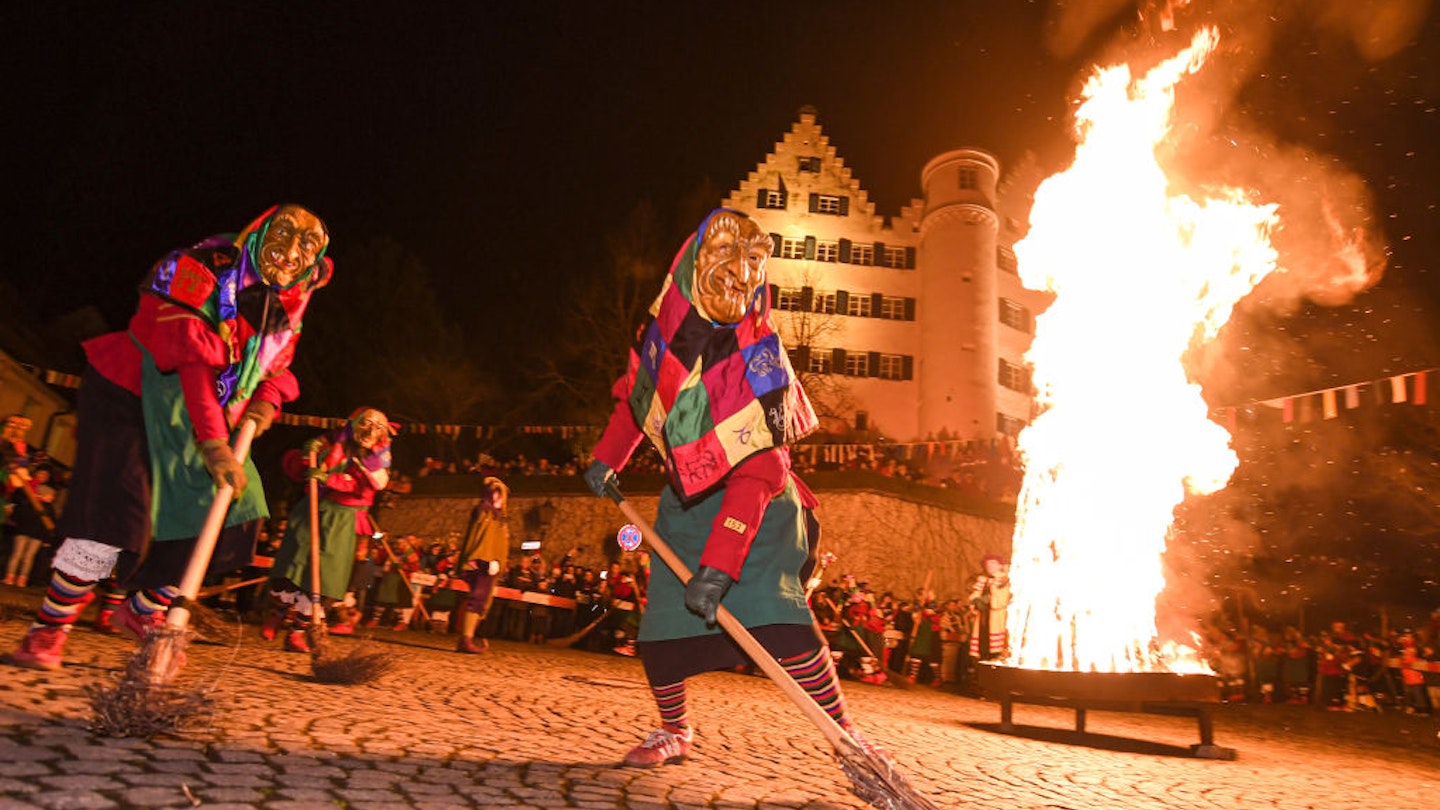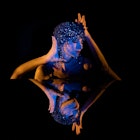Paganism is experiencing a global revival as more people are reconnecting with nature. Cities such as New Orleans, Edinburgh, and Drogheda, Ireland, have commercialized their pagan festivals, but there are still places where one can find ancient celebrations held outside of modernity; where traditions have remained locally-kept secrets passed down for generations.
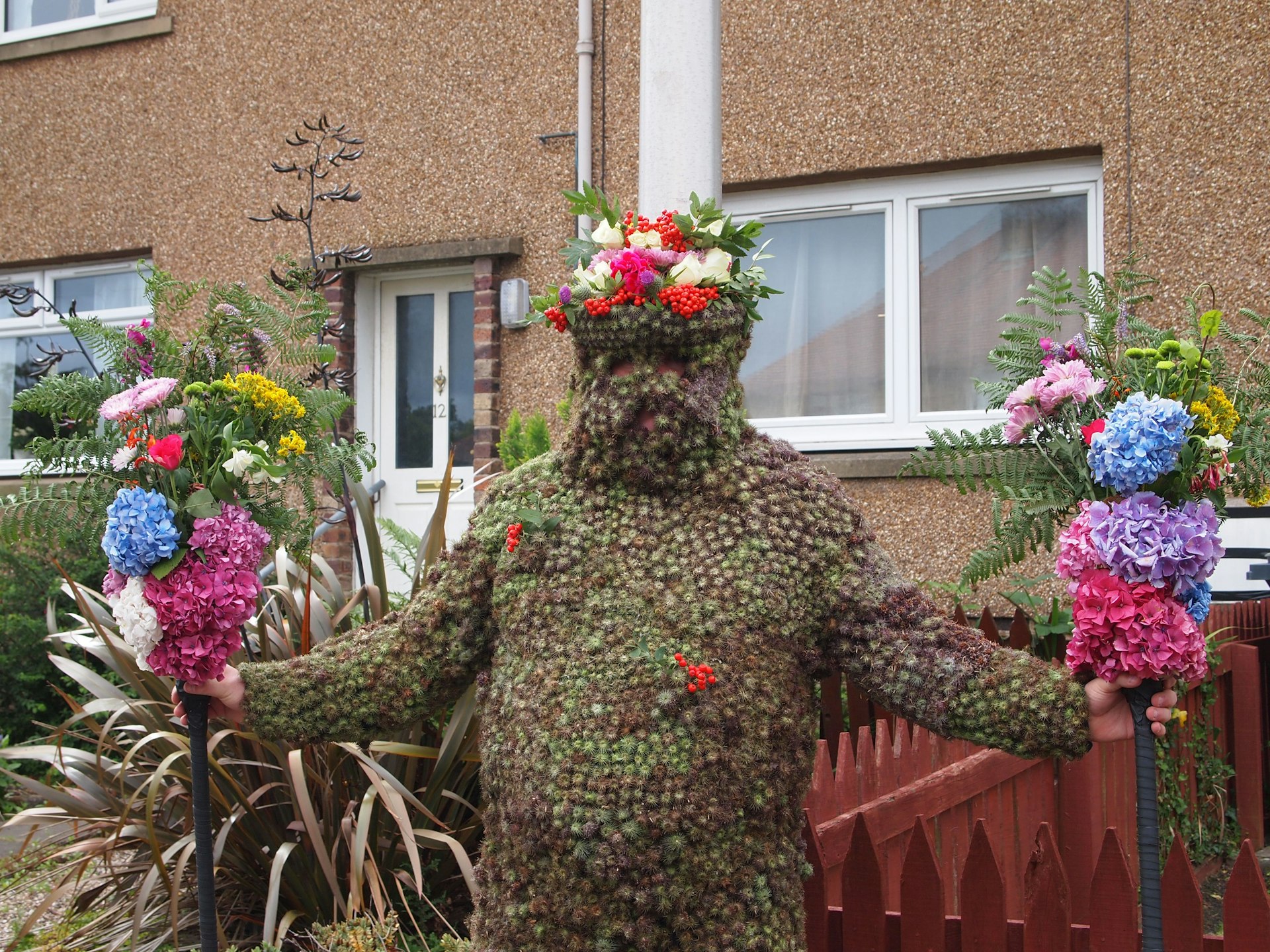
The Burryman Procession, South Queensferry, Scotland
Covered entirely in prickly burdock seedheads and adorned with a crown of flowers, the Burryman and his procession of bagpipe players and bell ringers have walked the streets of South Queensferry every August for over nine hundred years, making this the oldest festival in Scotland. Although the meaning behind this tradition is unknown, the Burryman is believed to be the Scottish interpretation of the Green Man, a pagan nature spirit representing rebirth and fertility, and whose presence wards off evil.
Only a male born in South Queensferry can become the Burryman. Considered a great honor, those selected often hold the position for many years. In the weeks leading up to the procession, the chosen man must hand-pick the thousands of burrs that will be used for his costume. The burrs are then stuck on to fabric panels, and on the morning of the big day, the panels are carefully applied to the man until he is fully engulfed in a suit of burrs. The Burryman is aided by a team of assistants, who keep his arms propped up on decorated staffs and escort him as he hobbles slowly through the town, a journey that lasts for nine hours. Along the way, onlookers bestow the Burryman with gifts of money and drams of whisky so that he will bring them good luck.
Where and when?
The Burryman Procession is held on the second Friday of August in South Queensferry, Scotland.
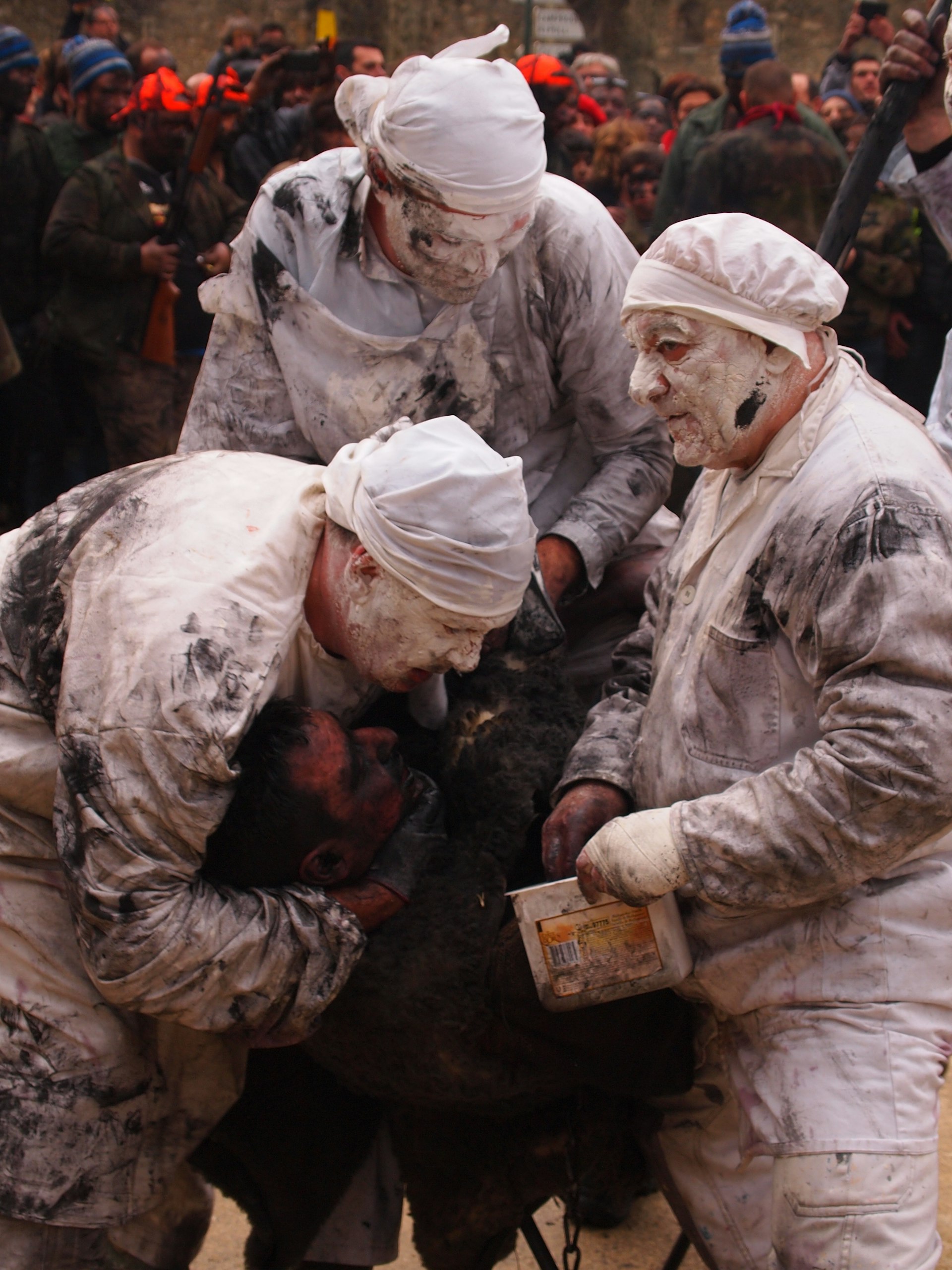
Fêtes de L’Ours (Festival of the Bears), Prats-de-Mollo-la-Preste, France
Symbolic of the age-old struggle between man and nature, the wild tradition of the Fêtes de L’Ours has been held in Pyrenees villages for centuries, tracing its origins back to the arctolatry – or bear cult worship – practiced by pre-Christian Basques. In Prats-de-Mollo-la-Preste, host to the oldest of the bear festivals, participants reenact the legend of a young shepherdess kidnapped by a lecherous bear. The young girl prayed for protection of her virtue to the nearby Notre Dame du Coral cathedral, which greatly displeased the bear. For nine days he howled in revulsion outside of his cave, attracting the attention of nearby woodcutters, as well as a farm boy and the hermit of Notre Dame du Coral. While the farm boy and the hermit came to the shepherdess’ rescue, the woodcutters tracked down and killed the bear.
The festival begins at Fort Lagarde on the hill above the village, where a feast is held for the men who have been chosen to play the bears. The chosen are then sewn into sheepskin costumes and have every visible patch of skin blackened with a thick mixture of oil and soot. Wielding long wooden staffs, the costumed bears let out a deafening roar and race down the hill, tackling people – women seem to attract the most attention – along the way, smearing their victims with soot. Down into the village’s winding maze of cobbled streets, the bears are pursued by hunters into the village square, where they are finally chained up and “shaved,” returning to their human forms.
Where and when?
The Fêtes de L’Ours is held on the second Sunday in February in Prats-de-Mollo-la-Preste, France. Be sure to wear old clothes – chances are you will get attacked!
Harvest Home, Whalton, England
Until about one hundred years ago, it was a common practice in rural communities throughout the United Kingdom to celebrate a bountiful harvest with a ritual known as the Harvest Home. At the end of the season, the last of the corn sheaves would be cut down and fashioned into the likeness of a woman, known as the Kern Baby. Dressed in an elegant white gown, ribbons and flowers woven into the ears of corn bursting from her head, the Kern Baby would be hoisted onto the top of a large pole; the community would gather round and dance below the effigy, then enjoy a great feast – farmers and laborers sharing the same table.
The tradition of the Harvest Home is believed to have originated in ancient Rome. In honor of Ceres, the goddess of agriculture, farmers would weave dolls out of the last of the gathered corn and display them in their fields. The dolls served as vessels to hold Ceres after the fields were reaped so that her spirit would not go astray.
Today, the village of Whalton in northern England is the last stronghold of this ancient custom, holding a bonfire – or Baal fire – to mark the end of the harvest, and since 2016 it has been home to a 15ft Kern Baby.
Where and when?
The Baal Fire and Kern Baby dance are held on July 4 in Whalton, England.

Fasnacht, Kriens, Switzerland
During the month of Lent, Switzerland comes alive with a wild cacophony of masquerades, pageants, and marching bands, dispelling the oppressive spirits of winter and allowing for one last indulgence before fasting begins on Ash Wednesday. Carnival – or Fasnacht – has been celebrated in Switzerland for centuries, and although modern Fasnachts favor elaborate costumes and pop culture motifs, historically participants wore old clothes and simplistic hand-carved wooden masks.
The city of Kriens has preserved these masking traditions. The earliest known Kriens masks – or Hübelimasken –date back to the eighteenth century and were crudely made with rudimentary features. The Hübelimasken became more sophisticated over time and began combining pagan symbolism with caricatures of common figures from the region. This eventually led to the creation of the four beloved characters unique to the Kriens Fasnacht: “Wöschwyb” – the washerwoman; “Krienser Deckel” – the French soldier; “Buuremaa” – the farmer; and “Bärnerwiib” – the Bernese courtesan. Each character has its own distinct personality: the cheeky Wöschwyb likes to gossip, while the lascivious Bärnerwiib lifts up her skirts and purrs at the crowd. The Krienser Deckel, with his elongated hat of red-painted tree bark, plays the dual role of villainous soldier and forest spirit, while the grumpy Buuremaa stomps along the parade route, frightening onlookers. In the past, only men were involved in Fasnacht, however today all genders are allowed to participate.
Where and when?
Fasnacht is held between Dirty Thursday and Carnival Tuesday, prior to Ash Wednesday, in Kriens, Switzerland.
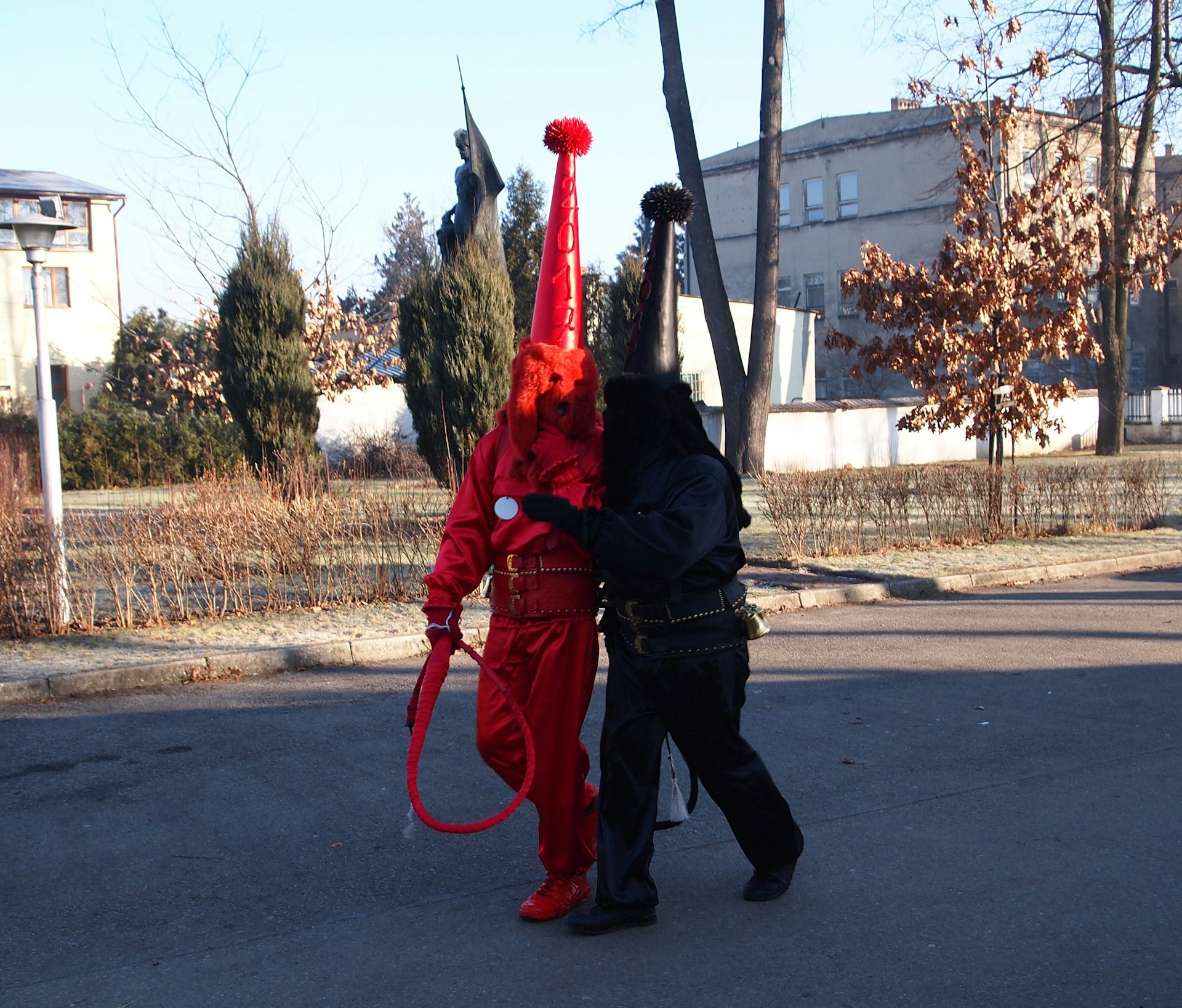
Gody Zywieckie, Zywiec, Poland
In the pre-dawn dark on New Year’s day, in the mountain town of Zywiec, a troop of colorfully-dressed men in conical hats and sheepskin masks race along the streets. These men are known as the Grandfathers – or Jukace –come to usher in the festivities of Gody Zywieckie, an ancient Slavic-pagan masquerade, heralding the end of winter.
The Jukace begin running on New Year’s Eve, going from party to party, accepting gifts of vodka, sweets, and money in return for good blessings. After attending a 5am Mass, the Jukace resume their sojourn around the city, jumping, dancing, and cracking their whips, embracing passersby and shouting well-wishes into the cold morning air. Gody Zywieckie culminates at noon with a parade in the center of the city.
The Jukace are seen as figures of good luck, their running symbolic of chasing away bad spirits and the old year. However, the origins of the characters are unknown. A popular local legend is that during the Deluge of 1655, Zywiec Highlanders dressed up as monsters and charged down the mountainside, frightening the invading Swedish army with their otherworldly looks and the crack of their whips, and allowed King John II Casimir of Poland to escape.
To become a Jukace is an arduous process; prospective applicants start as young as eight years old and work their way up the ranks of masquerade characters – Babka (old woman), Chimney Sweep, Imp – to become a Jukace. Even then, only bachelors are eligible and must undergo tests for strength, agility, and memory to determine whether or not they are right for the role.
Where and when?
Gody Zywieckie is celebrated on New Year’s Eve and New Year’s Day in Zywiec, Poland.
You might also like:
Walk through England's pagan past on the country's oldest road
Kurentovanje: the wildest Mardi Gras celebration you've never heard of
The best Bonfire Night celebrations in England
